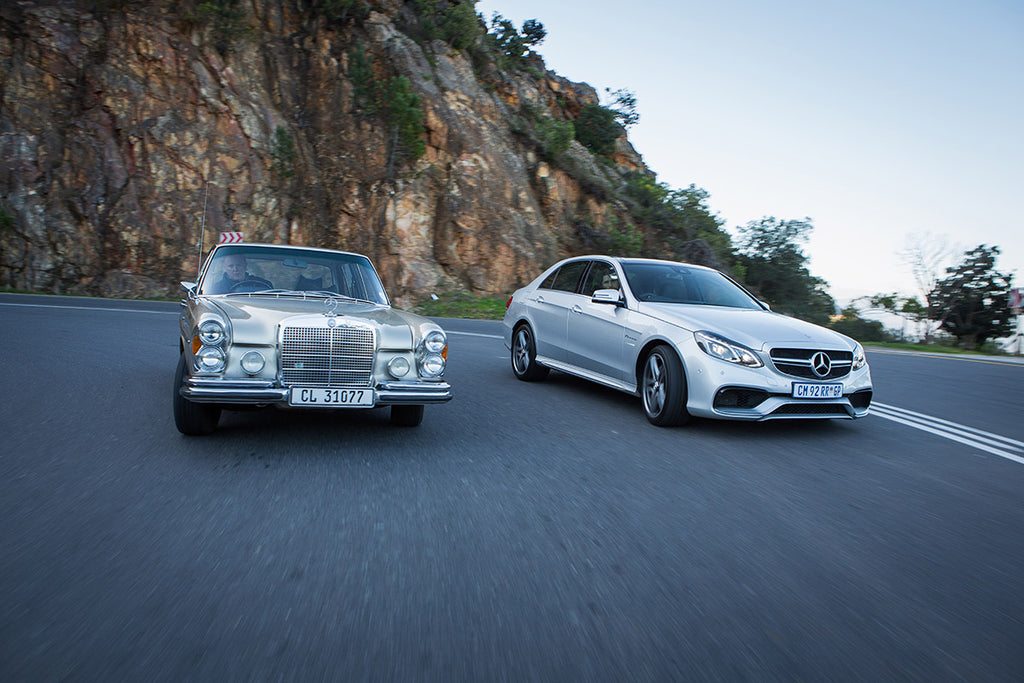The 300SEL 6.3 from 1967 was seen by many as Mercedes-Benz’s first true performance saloon – we head to the Elgin Valley and see how the classic holds up against a (relatively) modern equivalent from AMG.
Words: Wilhelm Lutjeharms
Pictures: Charles Russell
I remember the evening rather well. A few years ago the owner of this 300SEL 6.3 opened his garage door and as I walked through his collection of some of Stuttgart’s most interesting cars, spanning almost three decades, he first drove his 450SEL 6.9 and then the 6.3 out of his garage.
After each car had been warmed for a few minutes, he took me for a quick blast in each. He was generous enough to allow me to get behind the wheel of each car on our drive back and I was completely bowled over by the 6.3’s performance, especially since it was my first time behind the wheel of this car. Back in 1967, this Mercedes-Benz – one of the fastest cars at the time – had enthusiasts champing at the bit.
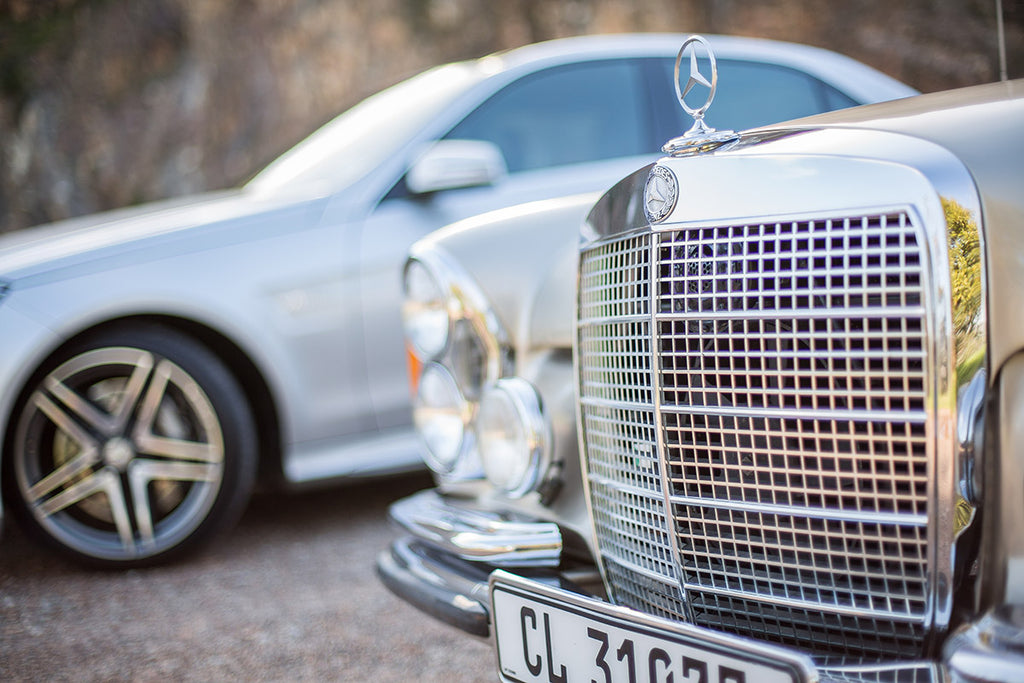
After that experience, I craved more time with the car and wanted to compare it to what I consider its spiritual successor. Technically, the 300SEL 6.3 is part of the S-Class timeline, but a W212-series E63 AMG is a similar size and better mirrors the 6.3’s agile-hooligan nature than Affalterbach’s latest super barge in the shape of Mercedes-AMG S-Class.
For the head-to-head we met in the Elgin Valley, surrounded by fruit farms scattered throughout the hills and land that is covered by hectares of pine trees. The owner had barely pulled up next to us before he plucked his smartphone from his pocket and started snapping details of the E63.
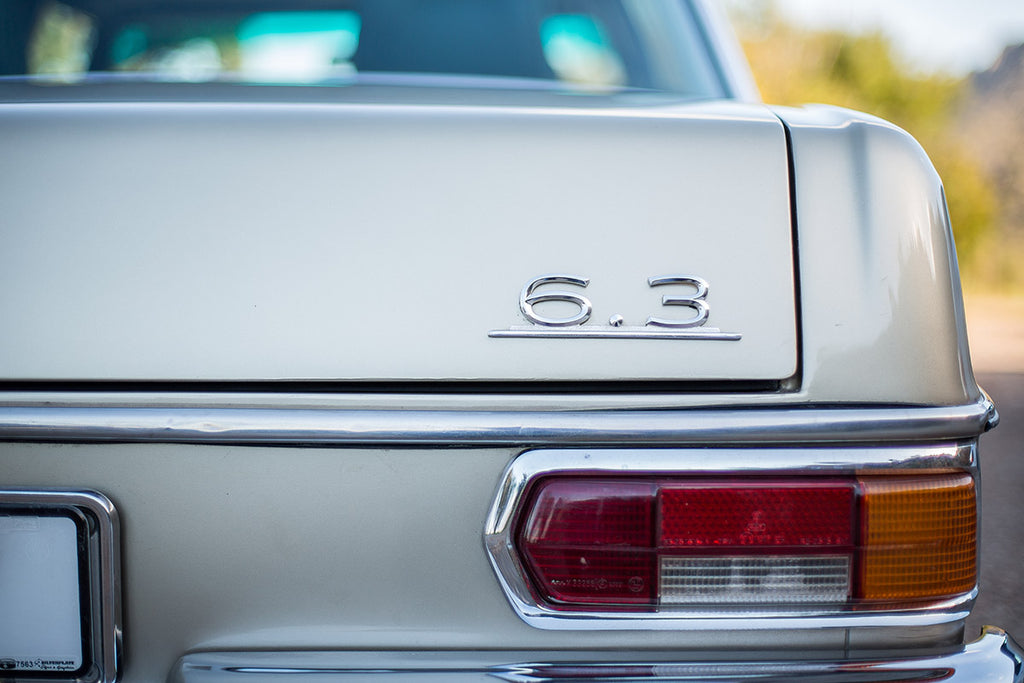
With its modern nose section the AMG demands respect, especially when it fills your rear view mirror with its snarling presence. Although there are four exhaust pipes flush with the rear bumper, the rear view of the E63 is still fairly conservative, yet the sills, badging and AMG wheels leave you in no doubt that this is Mercedes’ E-Class wild child.
Modern and classic
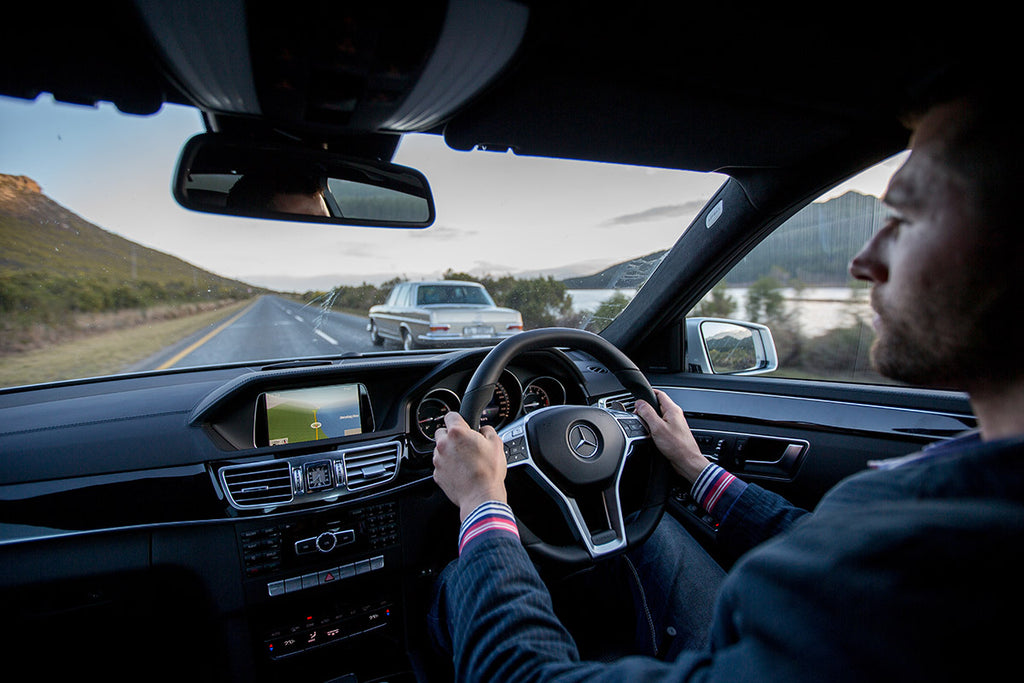
In the late 1960s and '70s, Mercedes cars boasted particularly solid-looking but elegant designs, and yet the 300SEL 6.3 looks dainty next to the E63, its Q-car credentials boosted as a result. Excepting the 6.3 badge on the bootlid, few could distinguish it from a regular 300SEL. Equipped with the same engine as the majestic W100 600 Grosser, the W109 formed the foundations of the Mercedes performance saloon. Almost five decades of technological advancement mean that the E63 AMG offers acceleration figures on par with several serious sportscars of it era, and even the estate version will keep such exotica company away from traffic lights.
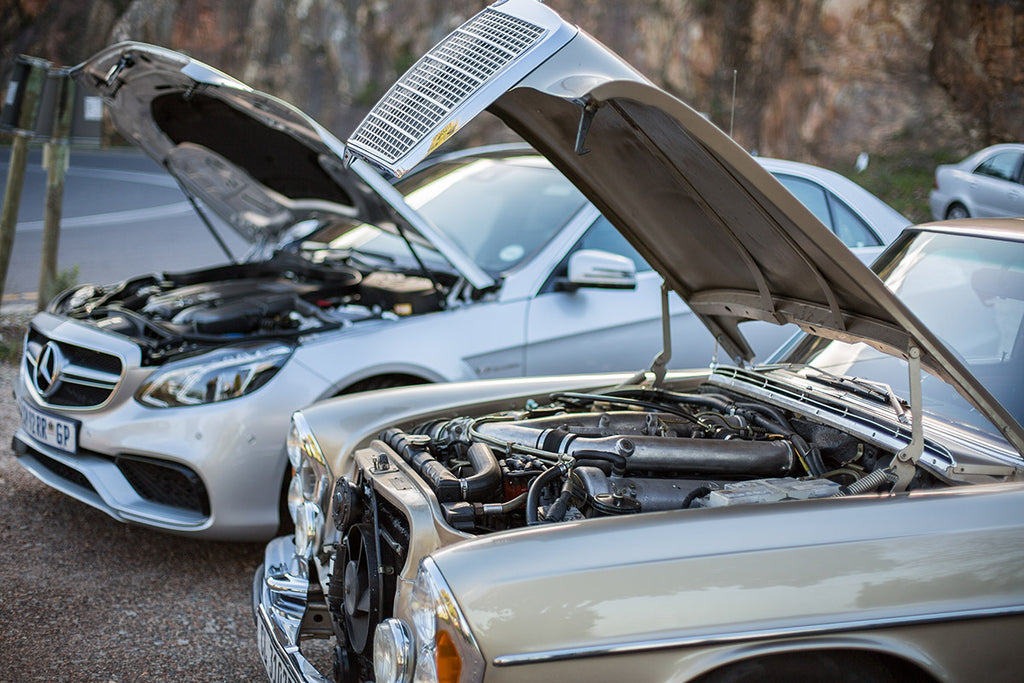
The engineers at Affalterbach were able to instill many of the 6.2-litre M156 V8’s traits into the 5.5-litre V8 biturbo (M157), including an eagerness to rev with minimal lag from the turbos. Even the thumping exhaust note has been masterfully engineered to offer a familiar soundtrack, and you quickly learn how to lure the exhausts into producing those memorable backfires. The 410 kW E63 holds the scale in perfect balance between effortless executive saloon and a truly ballistic car.
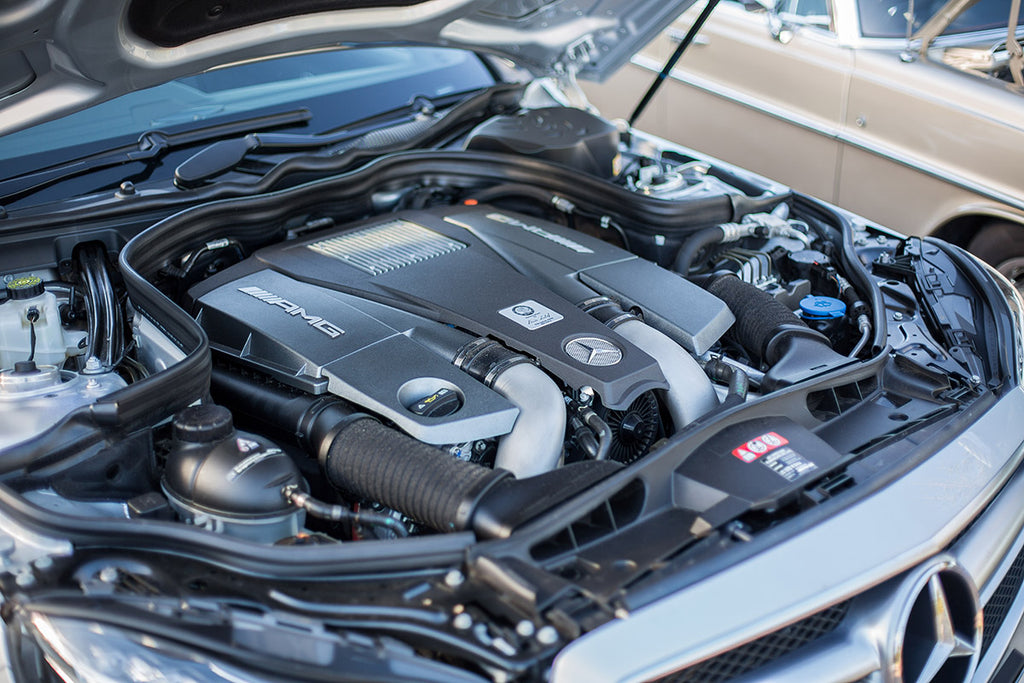
Driving through the town with all settings left in Comfort, the E63 – although firm – never causes its occupants discomfort, even with a 19-inch alloy wrapped in low profile rubber at each corner of the car. However, once the traffic has dissipated and the road twists through the valley, the E63 can be chased through the seven gears of its multi-clutch transmission. The performance of the engine largely hides the 1 845 kg kerb weight of the car, but you can feel the E-Class working against you slightly when braking hard from high speed for a tight corner, and once finally into the turn you must patiently wait to reapply the throttle, otherwise rear grip is easily overcome by the sheer brute force of AMG’s eight-cylinder.
Method to the madness
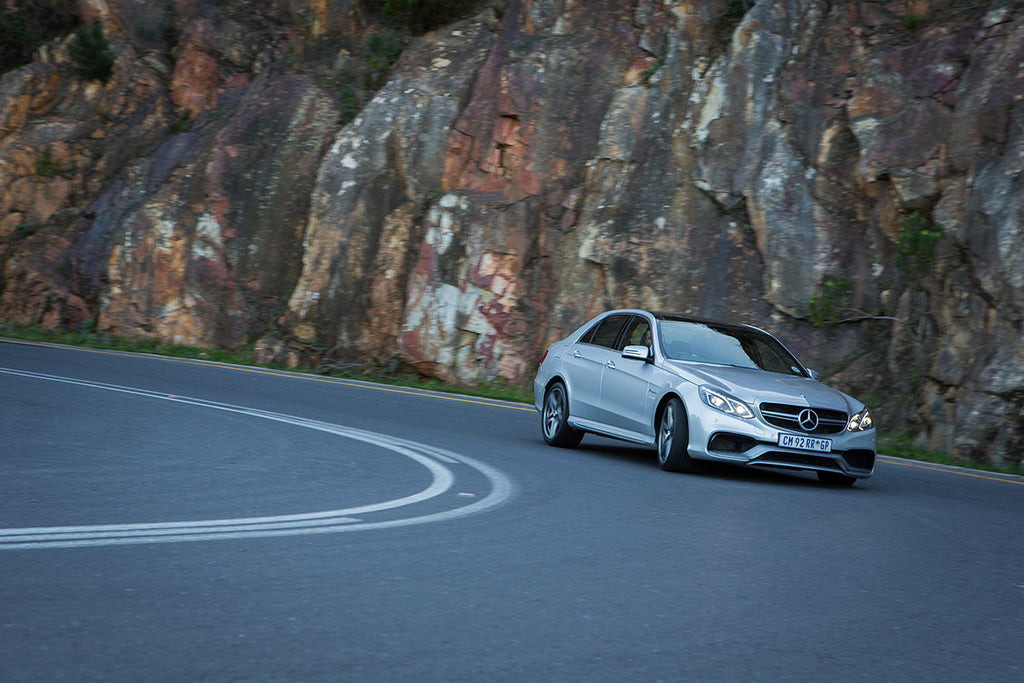
The ESP’s ‘sport handling’ setting allows the driver to experience the performance of the car with looser reins. Switch off the system completely and it takes almost no effort to light up the rear tyres and wander loosely round a corner. It is during such moments that you discover the electro-mechanical steering provides just enough feedback, and that its fixed turning ratio (20 per cent more direct than that of other Es) offers a nice compromise for a luxury saloon with sporting pretensions. The E63 is at its happiest through faster corners. It feels planted and the throttle can be gradually applied through the last part of the turn. As soon as the steering wheel is straight, I push the throttle to its stop and marvel as even the digital speedometer struggles to keep up with the pace of the car.
All things are relative

After such a rush, you need to take a long moment before climbing into the 300SEL 6.3. One must remember that, in its heyday, this was not a simple car. It has the same air suspension as the W100 600, which can cost a pretty penny to maintain. The 109-series SEL is luxuriously trimmed with materials of unsurpassed quality, and its colossal 6 332 cm3 V8 – with Bosch mechanical injection and two valves per cylinder – distinguished it not just from the Mercedes range, but from every other car.

You sink into the metal sprung seat, more so than you do in the firmer sports chair of the E63. The huge but thin rimmed steering wheel corresponds well with the rest of the controls, including the slim, chromed gear selector, other highlights including an air conditioning, leather upholstery and electric windows.
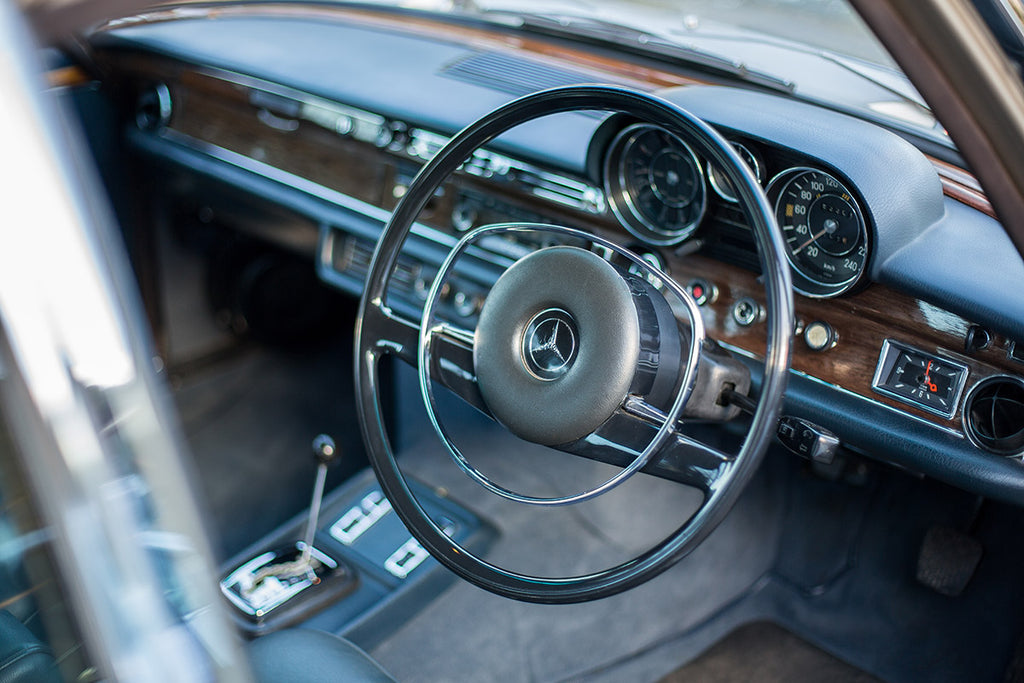
Shift the gearlever to drive, give the car some throttle and the 300SEL quickly gets moving. The high level of power assistance makes turning the steering at low speeds a breeze, but general response is, unsurprisingly, much slower than that experienced in the AMG.
Squeeze your right foot and a moment later the engine wakes up and the rev needle starts to climb, the V8 the dominating sound rather than the exhaust note, as in the AMG. Does the 300SEL 6.3 still feel quick after all this time? Without a doubt! Pushing it through the same corners as the E63, the old V8 saloon feels more alive and moves around a lot more than its modern counterpart.

Having said that, it flows and glides over longer undulations in the road surface much better than the AMG does, which itself is hardly crashy. Some research revealed that 6 526 units of the 300SEL 6.3 were built between December 1967 and September 1972. By no means a small number, but compare it to production numbers of Mercedes-Benz’s mainstream models at the time, between 100,000 and 400,000, and things are put into perspective.
Chariot of choice
With the photoshoot completed, I have no difficulty deciding which car to choose for the drive home. On the way to the location, I had a ball passing traffic with what felt like less than half of the E63’s throttle pedal travel. Corners gave me a chance to flick the left-hand paddleshifter and savour the automatic blipping function. But now it was time to relax.
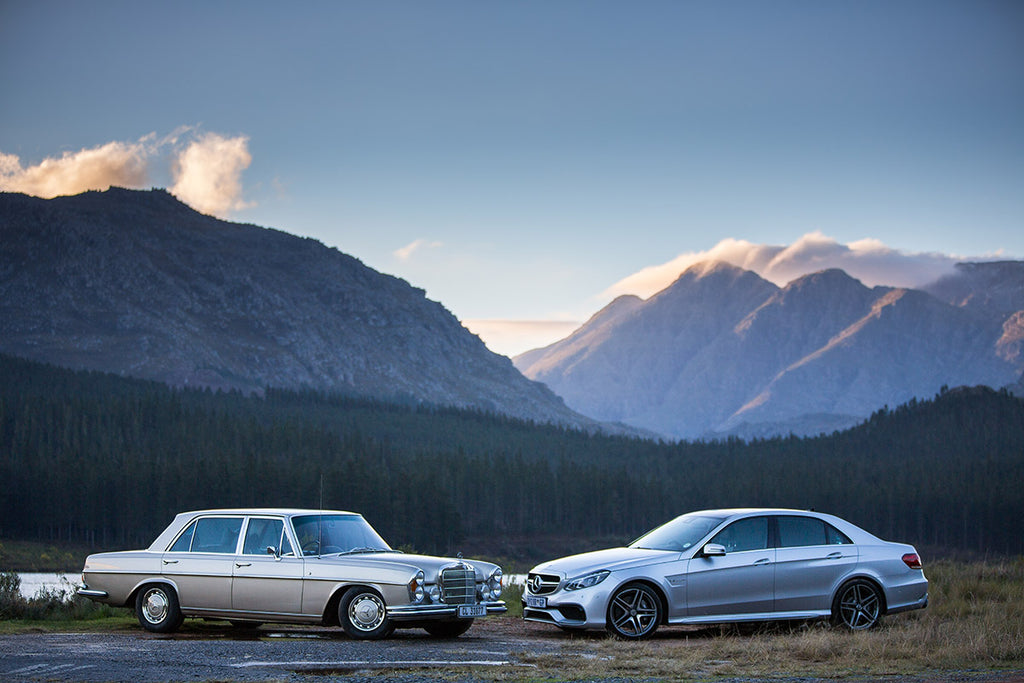
The photographer and I inspected the 300SEL 6.3’s interior from top to bottom. We pushed buttons, pulled levers and absorbed every other detail of this iconic performance saloon, marvelling at its rate of acceleration every time the M100 was allowed to sing to 4 000 rpm and beyond. As mountains and pine trees flashed by, I felt like filling the 105-litre fuel tank and exploring further along the coast. I just didn’t want the drive to end.
Specifications
Mercedes-Benz 300SEL 6.3 (W109)
Engine: M100, 6.3-litre, V8
Power: 184 at 4 000 rpm
Torque: 500 Nm at 2 800 rpm
Transmission: 4-speed auto, RWD
Weight: 1 780 kg
0-100 km/h: 6.5 seconds
Top speed: 220 km/h
Years produced: 1967 – 1972
Mercedes-Benz E63 AMG 6.3 (W212)
Engine: M157, 5.5-litre, V8 biturbo
Power: 410 kW at 5 500 rpm
Torque: 720 Nm between 1 750 - 5250 rpm
Transmission: 7-speed auto, RWD
Weight: 1 845 kg
0-100 km/h: 4.2 seconds
Top speed: 250 km/h
Years produced: 2011 – 2016

